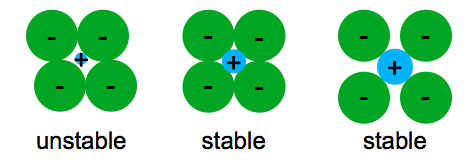Electronegativity is the capability of the nucleus in an atom to attract and retain all the electrons within the atom itself and depends on the number of electrons and the distance of the electrons in the outer shells from the nucleus.
Ceramics are formed by what bonds.
They are either ionic in character involving a transfer of bonding electrons from electropositive atoms to electronegative atoms or they are covalent in character involving orbital sharing of electrons between the constituent atoms or ions.
The ionic bond occurs between a metal and a nonmetal in other words two elements with very different electronegativity.
Graphene is currently considered the strongest known material.
Additionally carbon based materials such as carbon fiber carbon nanotubes and graphene can be considered ceramics.
Ceramics may be glazed prior to firing to produce a coating that reduces porosity and has a smooth often colored surface.
Most often fired ceramics are either vitrified or semi vitrified as is the case with earthenware stoneware and porcelain.
Most ceramics are made up of two or more elements.
A ceramic is an inorganic nonmetallic solid generally based on an oxide nitride boride or carbide that is fired at a high temperature.
Perhaps the most confusing decision for clinicians is bonding versus cementing of ceramic restorations.
Underlying many of the properties found in ceramics are the strong primary bonds that hold the atoms together and form the ceramic material.
1 2 zirconia based and lithium disilicate ceramics are rapidly growing segments within the ceramic category.
Ceramic restorations are an esthetic biocompatible and costeffective alternative to ceramic metal restorations.
Varying crystallinity and electron composition in the ionic and covalent bonds cause most ceramic materials to be good thermal and electrical insulators extensively researched in ceramic engineering.
An oxide oxide non oxide non oxide or oxide non oxide combinations.
The atoms in these ceramics are arranged so that each pair of nearest neighbour atoms forms a chemical bond by sharing a pair of electrons.
According to this definition elemental carbon is a ceramic.
This electron transfer creates positive metal ions cations and negative nonmetal ions anions which are attracted to each other through coulombic attraction.
Occur when two molecules combine releasing a smaller molecule usually water as the bond forms.
This is called a compound.
Recall that the predominant bonding for ceramic materials is ionic bonding.
These chemical bonds are of two types.
The two most common chemical bonds for ceramic materials are covalent and ionic.
In ionic bonding a metal atom donates electrons and a nonmetal atom accepts electrons.
Two types of bonds are found in ceramics.
Covalent bonding is found in many ceramic structures such as sic bn and diamond.
For example alumina al 2 o 3 is a compound made up of aluminum atoms and oxygen atoms.
A common definition of a ceramic is a hard material that is held together with ionic and covalent bonds.
The atoms in ceramic materials are held together by a chemical bond.










